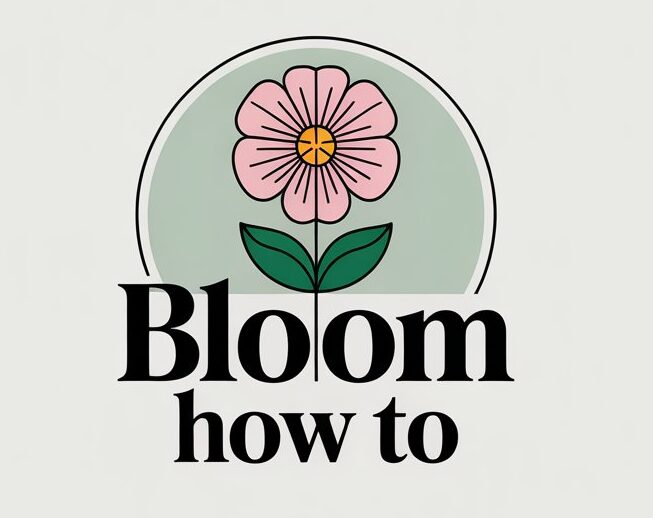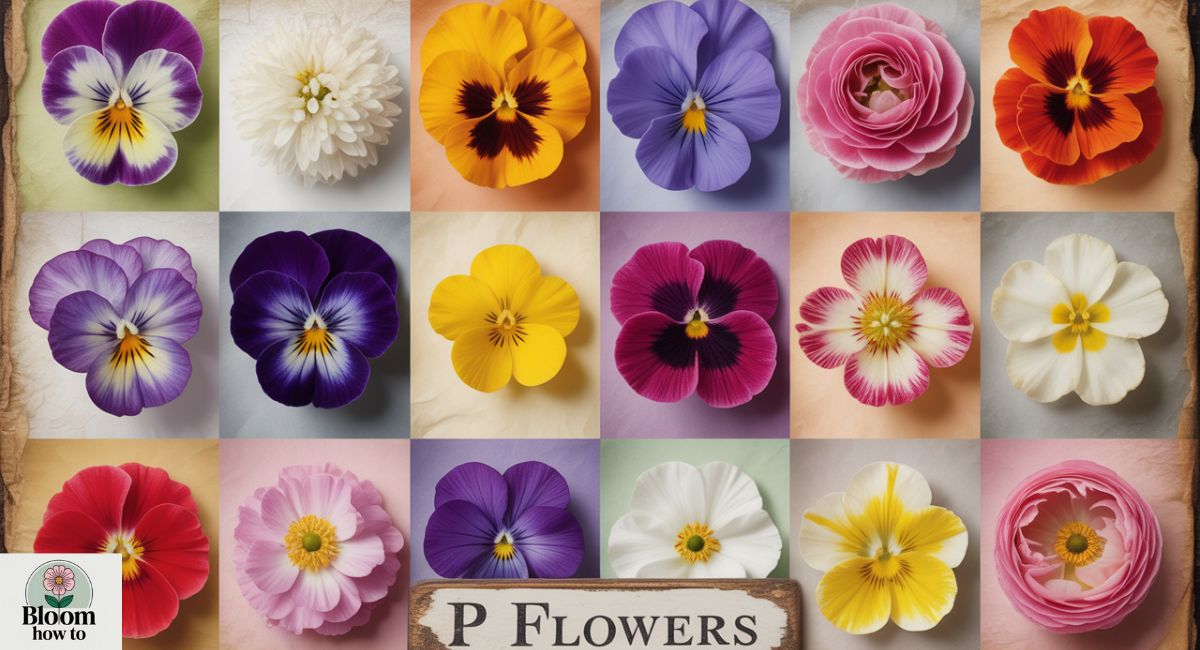If you’re searching for beauty and variety, exploring a list of 15 flowers that start with letter P is the perfect place to begin. These blooms are loved across the USA for their charm, colors, and meaning. From popular flowers beginning with P like Peony and Petunia to exotic flowers with letter P such as Protea and Plumeria, every gardener can find a favorite.
Some are classic cottage garden flowers, while others appear on the tropical flowers list admired in warmer states. Whether you’re after fragrance, symbolism, or easy-growing options, these “P” flowers bring color and joy to every season.
Popular Flowers That Start With P
Pincushion Flower
The Pincushion Flower is loved for its soft, round blooms that look like sewing cushions. Its shades of lavender, white, and pink attract butterflies and hummingbirds, making it a true pollinator-friendly plant. Gardeners enjoy its long blooming season, which lasts from spring until fall.
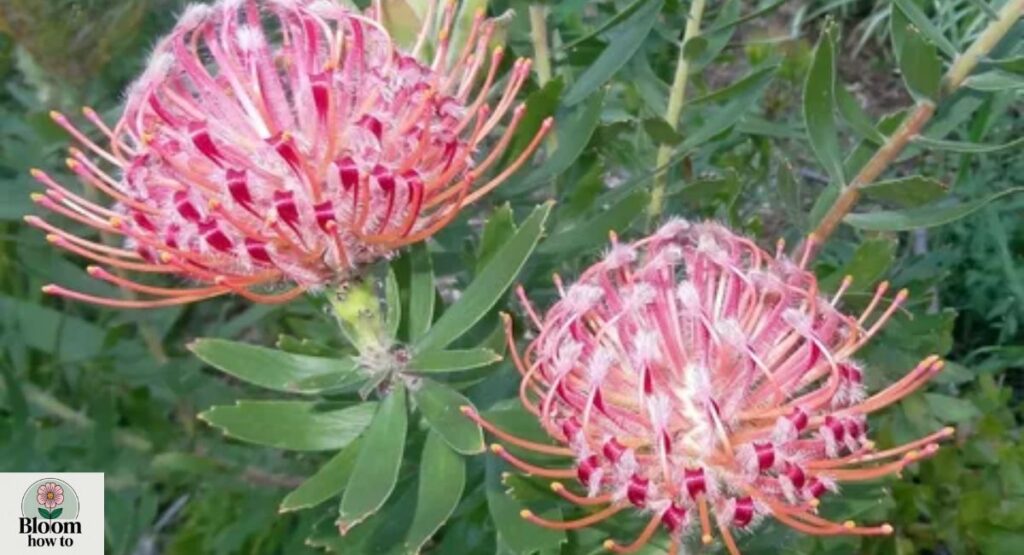
It grows best in well-drained soil under full sun but can handle light shade. This low-maintenance flower thrives in borders and containers, and it’s popular for cut flower bouquets. In symbolism, it represents peace and purity, making it a graceful addition to weddings and memorial gardens.
Painted Daisy
The Painted Daisy stands out among perennial flowers that start with P. Its daisy-like blooms appear in pink, red, and white, adding bursts of color to spring gardens. Many U.S. gardeners also value it for its natural pest-repelling properties, making it both pretty and practical.
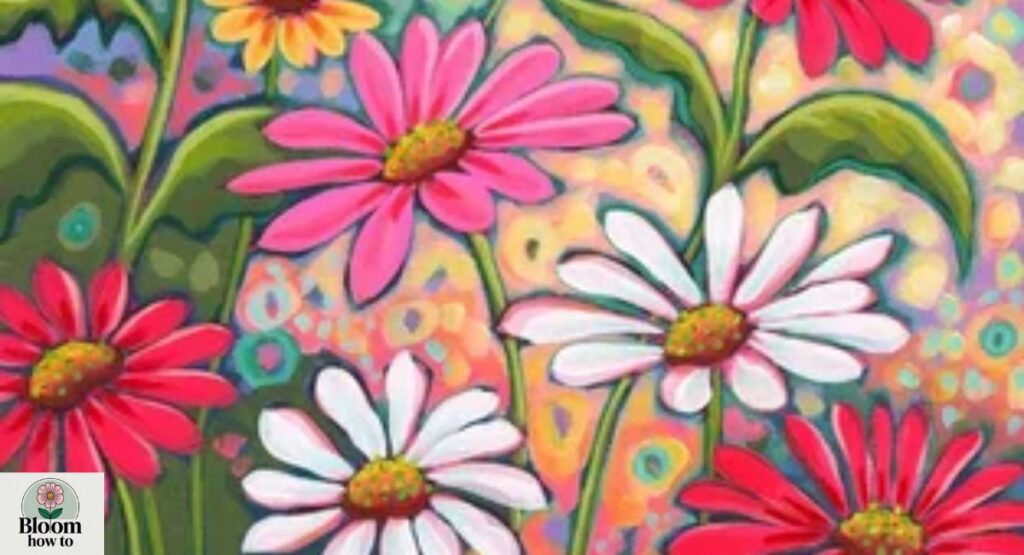
This flower loves full sun and fertile soil that drains easily. It thrives in USDA zones 3–7, offering color for weeks in borders and cottage gardens. Symbolically, the Painted Daisy is tied to energy and fresh starts, making it a lively choice for spring landscapes.
Protea
The Protea is one of the most striking exotic flowers with letter P. Known as the “King Protea,” its bold, spiky petals resemble a crown. It’s popular in modern bouquets for its strength and unique beauty. In U.S. gardens, it grows well in California, Florida, and Hawaii.
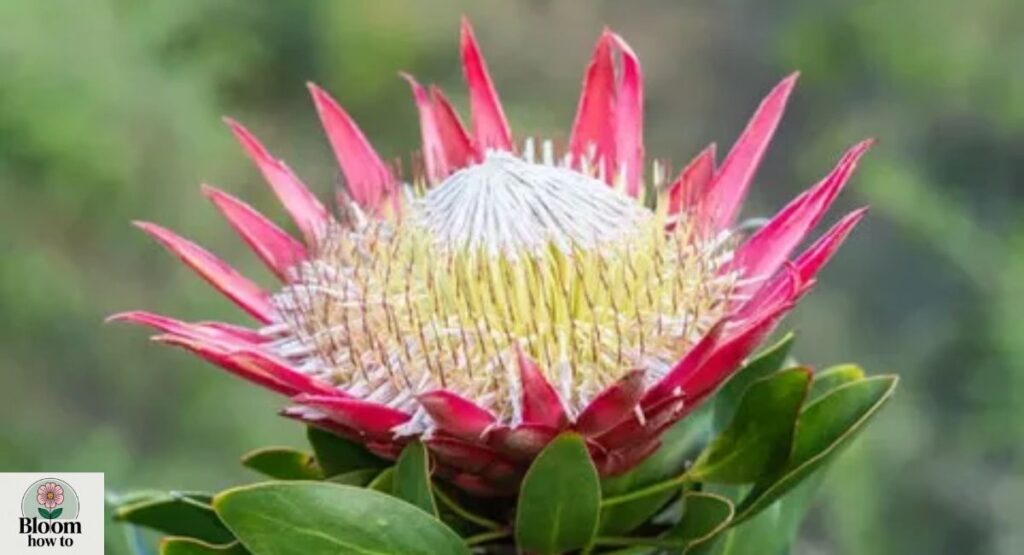
Proteas thrive in sandy soil with plenty of sunlight. Their blooms symbolize transformation and resilience, making them not only attractive but also meaningful. With strong stems and waxy petals, they last long as cut flowers, bringing a dramatic touch to both gardens and floral designs.
Exotic & Unique Flowers Beginning With P
Parrot Lily
The Parrot Lily is one of the most eye-catching exotic flowers with letter P. Its petals mix red, yellow, and green, resembling tropical birds in flight. This rare perennial grows best in fertile soil with partial shade, adding bold drama to American gardens.
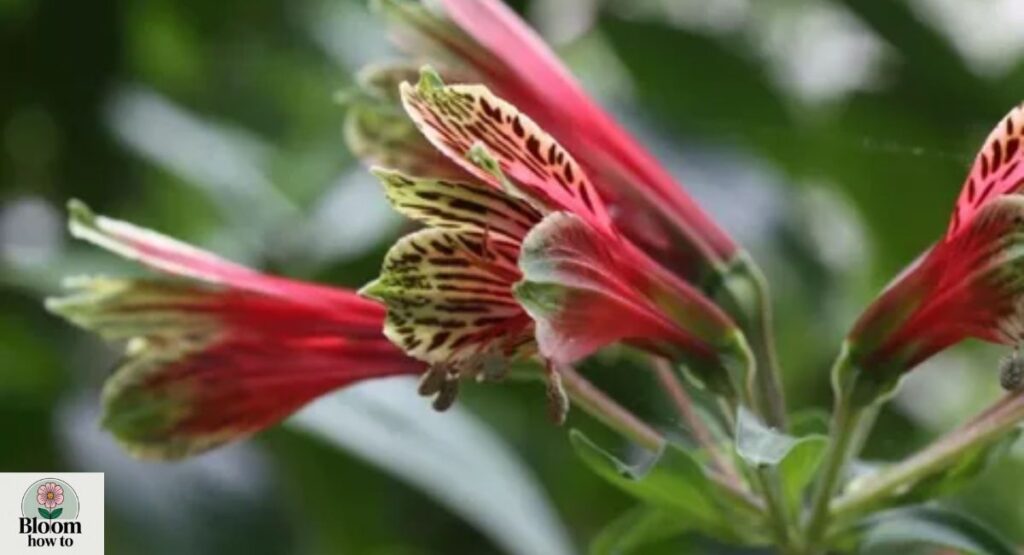
It’s often chosen for tropical-themed landscapes and container gardening. In symbolism, the Parrot Lily represents creativity and energy, making it a favorite for vibrant garden displays. Its unique colors bring a sense of the tropics to homes far from equatorial climates.
Persian Buttercup
The Persian Buttercup, also called Ranunculus, is loved for its layered, rose-like petals. These colorful blooms starting with P appear in red, orange, yellow, and pink, making them popular in spring arrangements. Florists prize them as cut flowers for bouquets.
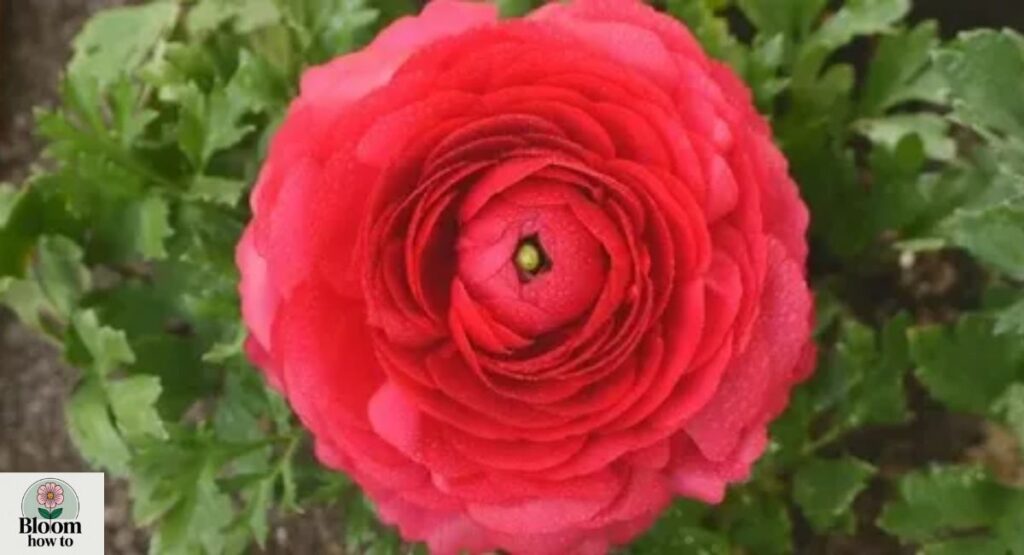
They grow well in fertile, well-drained soil and prefer cool weather. In the USA, they’re widely grown in California fields for commercial floristry. Symbolically, the Persian Buttercup represents charm and attraction, adding romance to both gardens and indoor spaces.
Plumeria
The Plumeria, also called Frangipani, is a staple in the tropical flowers list. Known for its fragrant blossoms, it’s widely used in Hawaiian leis and symbolizes friendship, positivity, and renewal. Its creamy petals often fade into pink or yellow centers.
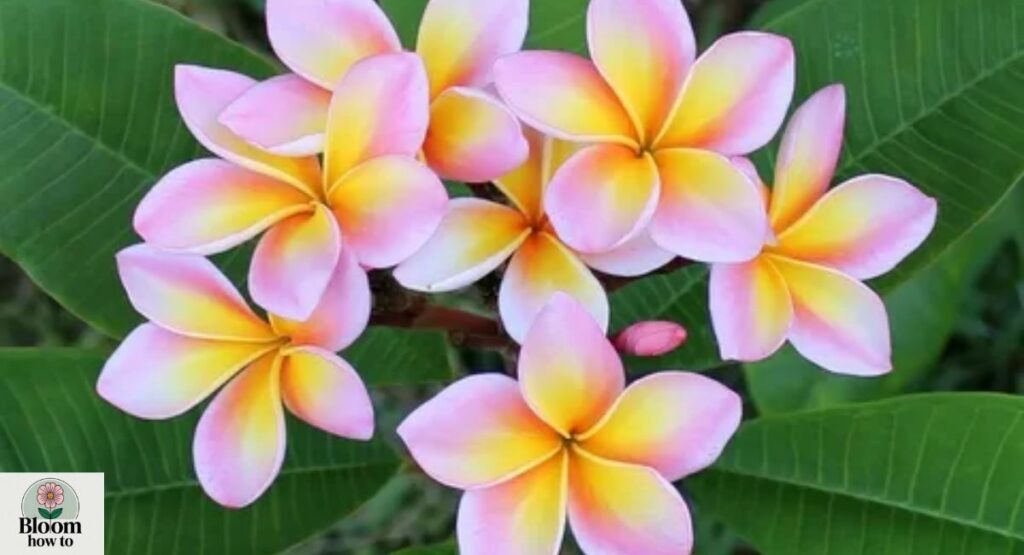
This plant thrives in warm climates and does best with full sun and sandy soil. In the U.S., it grows beautifully in Florida, Hawaii, and southern Texas. Gardeners also enjoy it as a patio plant in containers where winters are colder.
Fragrant & Aromatic “P” Flowers
Polyanthus
The Polyanthus is a cheerful spring-blooming flower known for clusters of brightly colored, scented blooms. It thrives in cool weather and brings fragrance to shaded borders and walkways. In the USA, it’s a favorite for cottage gardens and patio pots.
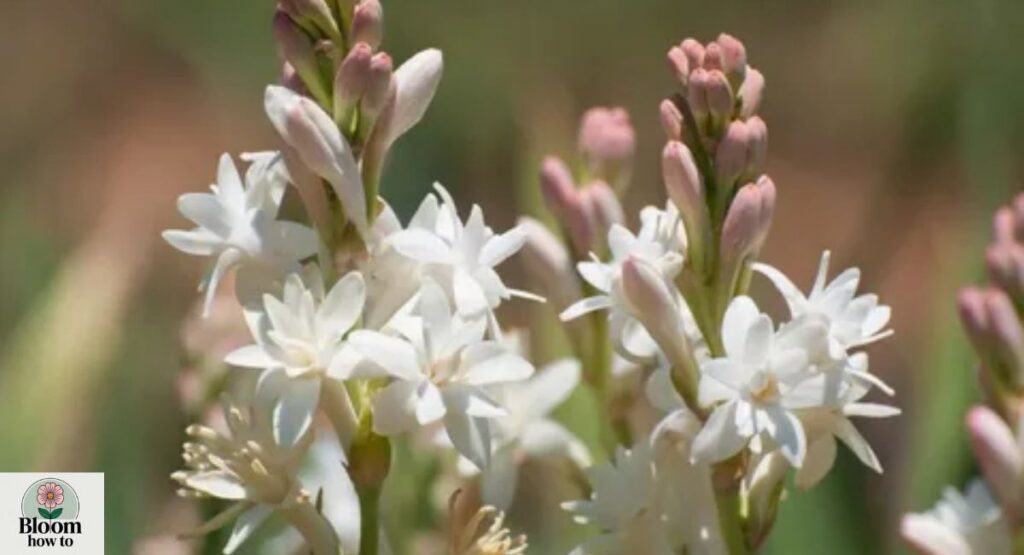
Symbolically, Polyanthus represents youth and happiness. With moist, fertile soil and partial shade, it grows reliably year after year. Its sweet scent and wide color range make it perfect for gardeners seeking both beauty and fragrance.
Prairie Smoke
The Prairie Smoke is a native North American perennial prized for its delicate, nodding pink flowers. As the petals fade, they transform into feathery plumes, giving the plant a smoky appearance. It’s drought-tolerant and thrives in sunny prairies and meadows.
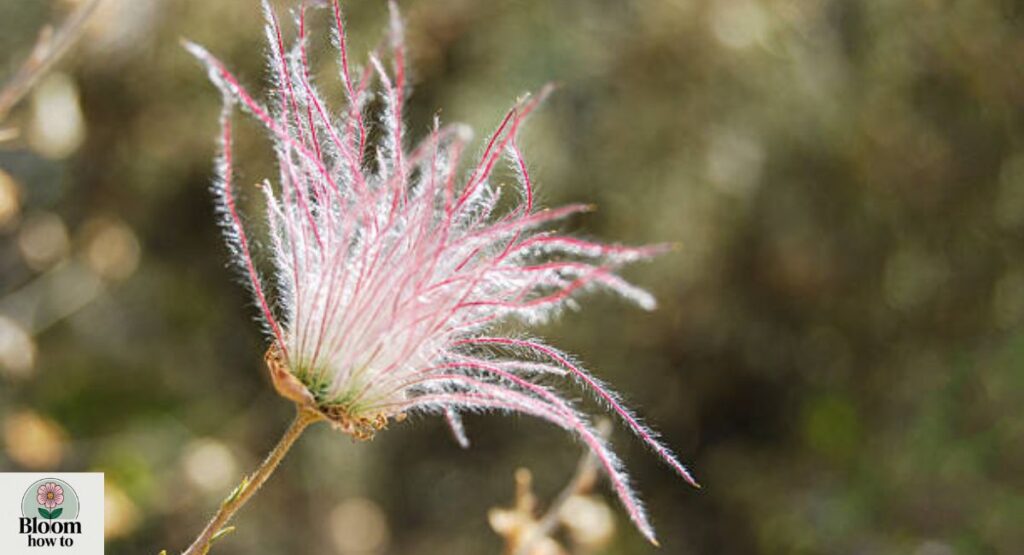
Gardeners admire it not only for its unusual look but also for its fragrant blossoms. Prairie Smoke symbolizes mystery and transformation, making it a meaningful choice for wild-inspired gardens across the USA.
Petticoat Daffodil
The Petticoat Daffodil is a miniature daffodil variety with trumpet-shaped blooms that resemble a frilled skirt. Its soft yellow flowers are both delicate and sweetly scented. It grows well in containers, rock gardens, and sunny borders.
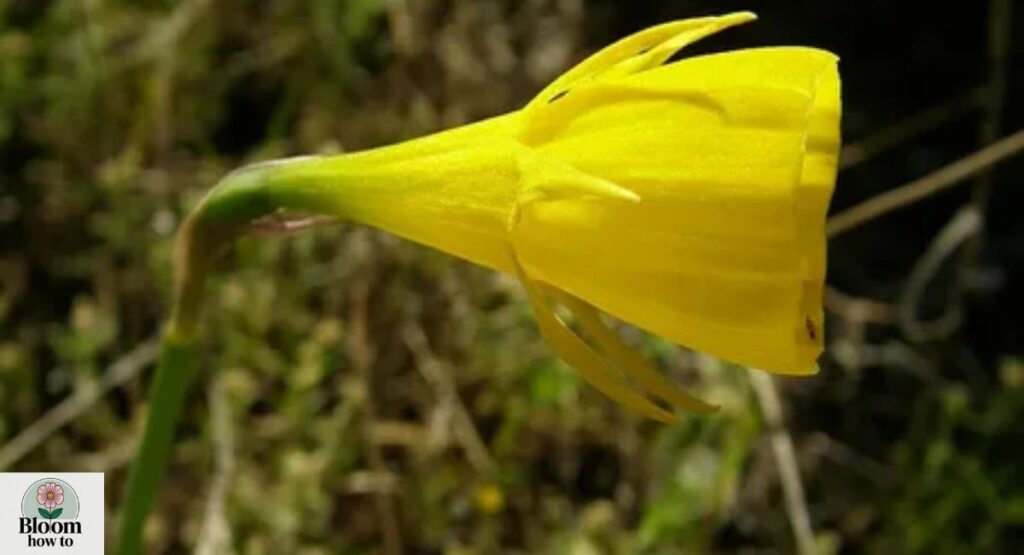
Symbolically, the Petticoat Daffodil is tied to renewal and hope. With well-drained soil and full sun, it thrives in early spring. Its gentle fragrance makes it a lovely choice for indoor displays and cut arrangements.
Wild & Garden-Friendly P Flowers
Prairie Gentian
The Prairie Gentian is a striking wildflower starting with P that grows in open fields across North America. Its star-shaped blooms appear in shades of violet-blue and white, often lasting through summer. Hardy and resilient, it thrives in well-drained soil with full sun.
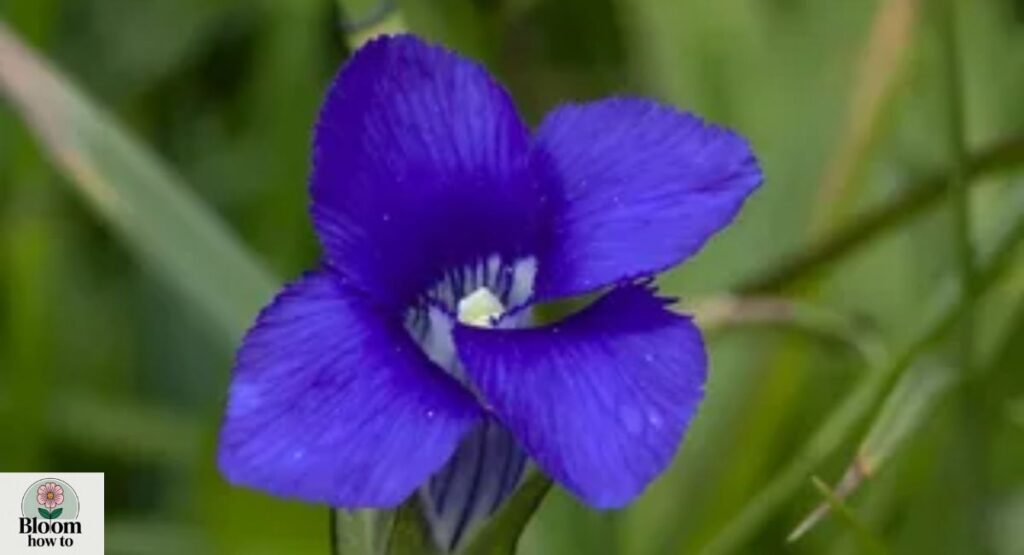
Symbolically, this flower represents peace and endurance. Gardeners in the USA love it because it’s both pollinator-friendly and low-maintenance. Its natural beauty makes it ideal for wildflower gardens and meadow landscapes.
Potentilla
The Potentilla, also called cinquefoil, is a groundcover flower starting with P. Known for its yellow or orange blooms, it spreads easily and grows in poor, sandy soil. Its drought-tolerant flowers are well-suited for hot American summers.
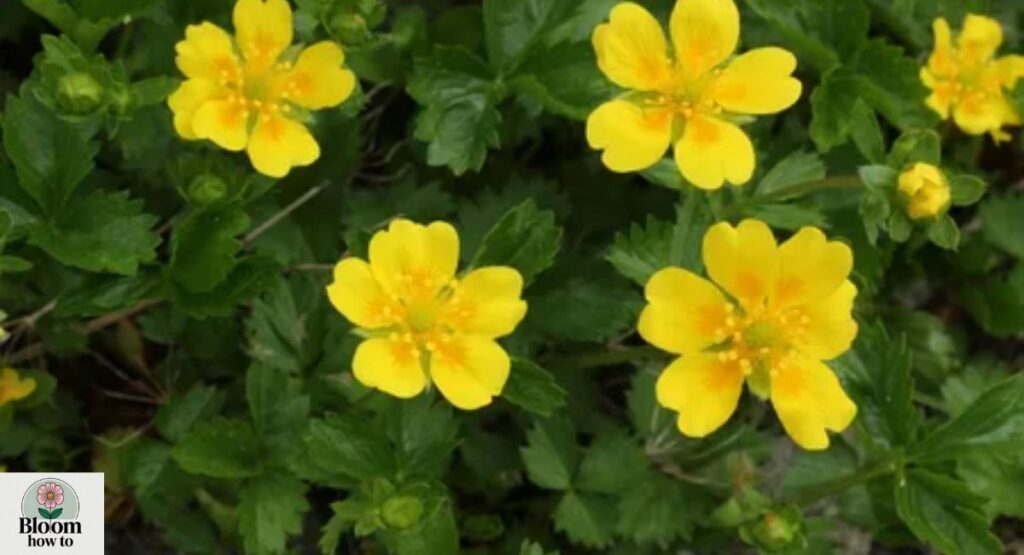
In symbolism, Potentilla stands for strength and endurance. Many gardeners grow it in rock gardens, borders, or naturalized areas. Its long blooming season ensures color throughout summer with very little care.
Portulaca (Moss Rose)
The Portulaca, or Moss Rose, is a sun-loving annual with vivid, rose-like flowers. It thrives in sandy, dry soil, making it one of the best low-maintenance flowers starting with P. Its succulent leaves also help it withstand drought.
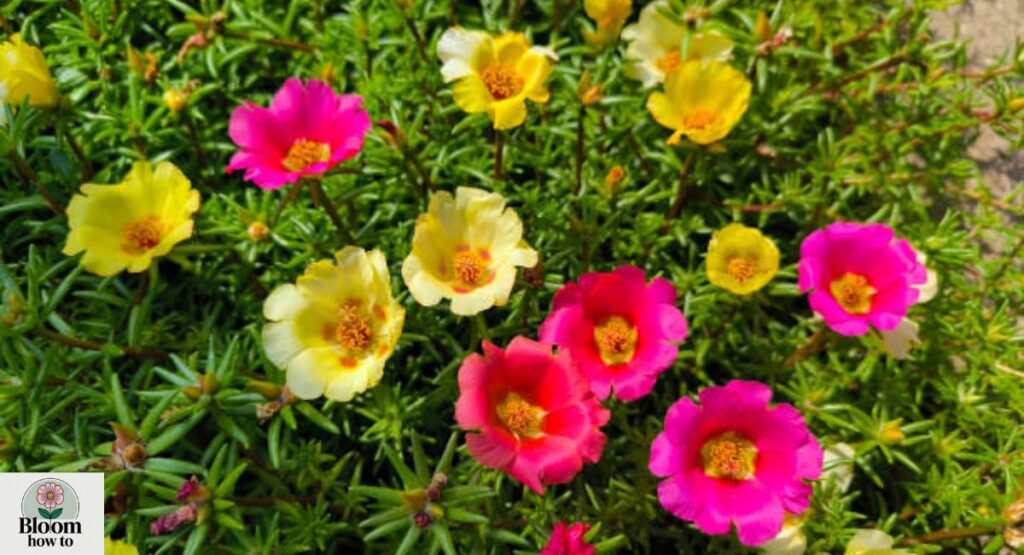
This plant is a symbol of cheerfulness and positivity. In the USA, it’s common in hanging baskets, groundcover beds, and containers. Its blooms open in sunlight and close at night, adding a lively rhythm to any garden.
Indoor & Decorative P Flowers
Platycodon (Balloon Flower)
The Platycodon, also called Balloon Flower, is a fun plant for pots and containers. Its balloon-like buds puff up before bursting into star-shaped purple or blue flowers. This indoor flowering plant P is popular for adding charm to sunny windowsills.
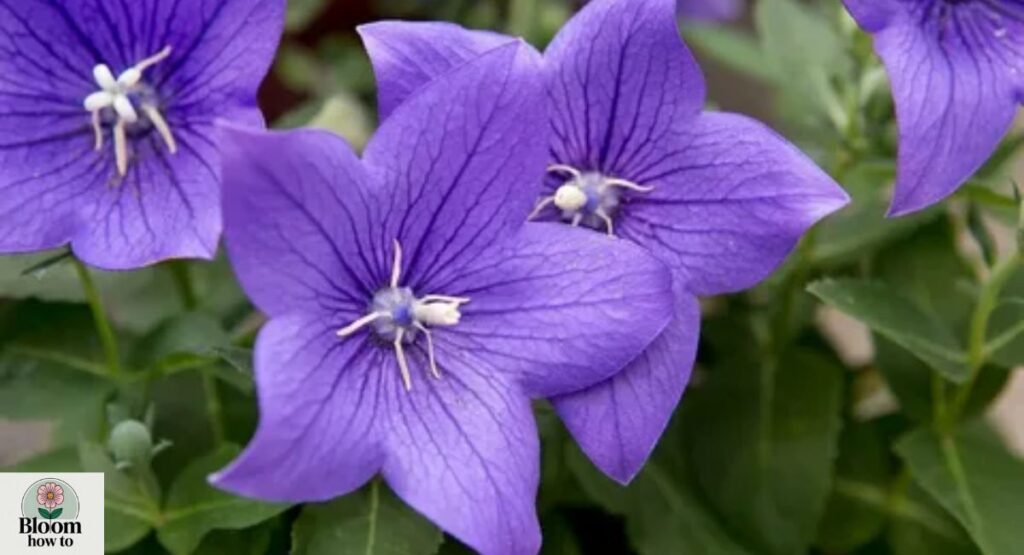
In symbolism, it represents honesty and everlasting love. With well-drained soil and bright light, it grows easily indoors. Many U.S. gardeners enjoy it as a quirky decorative addition to both homes and patios.
Philodendron
The Philodendron is best known as a foliage plant, but some varieties produce unusual blooms. These creamy spathes make it a unique indoor decorative plant for homes. Loved for its easy care, it thrives in partial shade and adapts to container gardening.
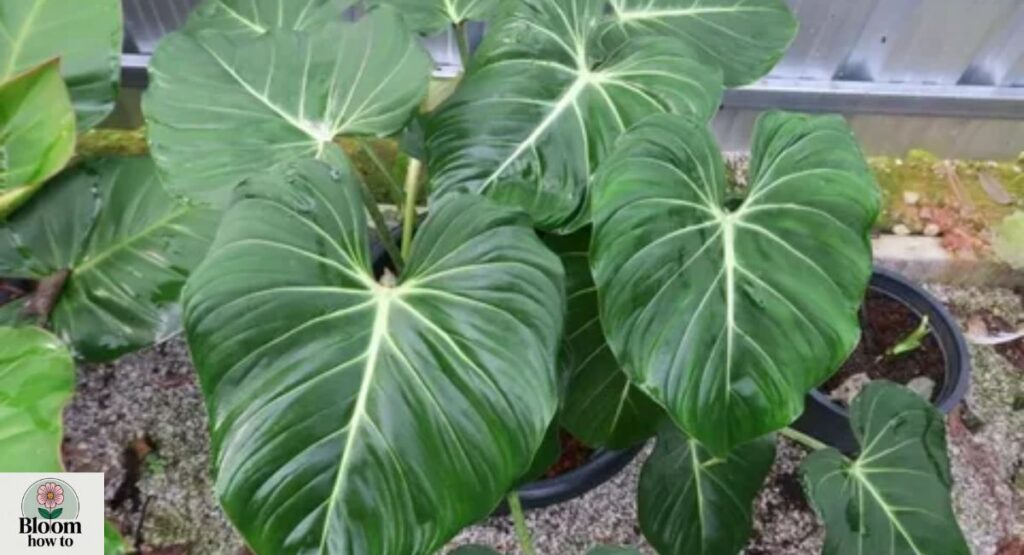
Symbolically, the Philodendron stands for health and growth. In the USA, it’s one of the most popular houseplants, often chosen for both style and air-purifying benefits. Its occasional blooms add a touch of surprise to its lush greenery.
Pink Polka Dot Plant
The Polka Dot Plant is famous for its bright leaves dotted with pink, white, or red spots. While often grown for foliage, it can produce small purple blooms. This makes it a cheerful option among indoor flowering plants P.
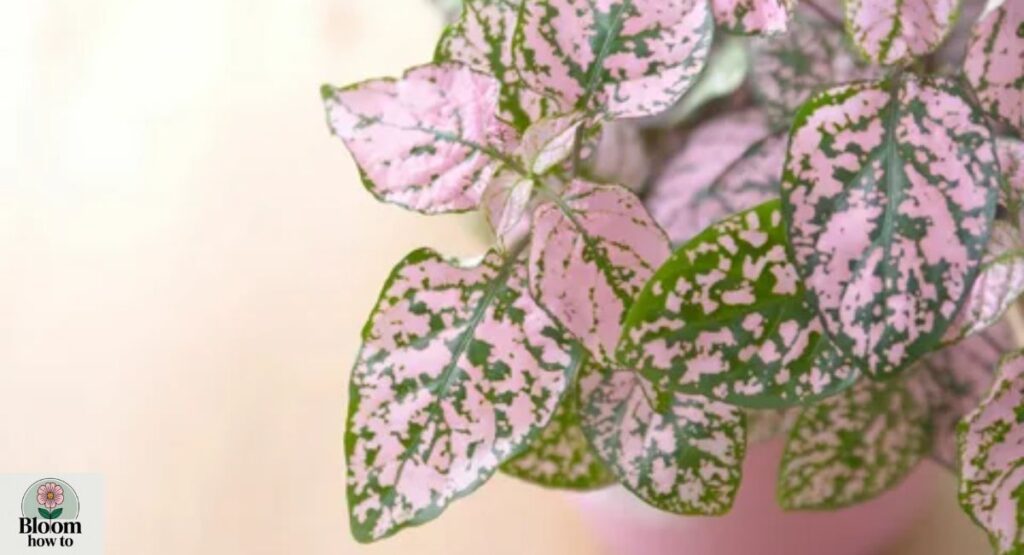
It symbolizes creativity and joy, often used in decorative displays. The plant enjoys fertile soil and indirect light, thriving in American homes as both a houseplant and tabletop accent. Its playful look makes it a favorite for modern indoor gardens.
Tips for Growing and Caring for P Flowers
Sunlight Needs
Most flowers starting with P love bright conditions, though some thrive in partial shade. For example, Petunia and Poppy need full sun, while Primrose prefers cooler shaded areas. Matching the right flower to your light conditions ensures healthy blooms.
Soil and Watering
The majority of perennial flowers that start with P enjoy well-drained soil enriched with compost. Overwatering should be avoided, especially for Protea or Prickly Pear Cactus, which are drought-tolerant. Regular deep watering benefits plants like Peony and Plumeria.
Spacing and Airflow
Proper spacing prevents diseases and allows flowers to grow freely. For compact plants like Pansy, 6–12 inches is enough, while larger blooms like Peony or Pentas need 2–3 feet. Good airflow keeps fungal problems away in humid U.S. climates.
Container Gardening
Many indoor flowering plants P such as Platycodon or Polka Dot Plant do well in pots. Choose containers with drainage holes and use light, fertile soil. Containers let you control growth conditions and are perfect for urban U.S. homes.
Quick Care Table for “P” Flowers
| Flower (P) | Sunlight | Soil Type | Watering Need | Special Note |
| Peony | Full Sun | Fertile, loamy | Regular, deep | Needs cold winters to bloom |
| Petunia | Full Sun | Well-drained | Moderate | Long-blooming annual |
| Primrose | Partial Shade | Moist, rich | Frequent | Loves cool spring weather |
| Protea | Full Sun | Sandy, acidic | Light | Very drought-tolerant |
| Plumeria | Full Sun | Cactus mix | Deep, occasional | Excellent cut flower |
| Prickly Pear Cactus | Full Sun | Sandy, gritty | Minimal | Edible fruits, hardy cactus |
| Platycodon | Sun/Partial | Well-drained | Regular | Fun indoor decorative plant |
Conclusion
Exploring this list of 15 flowers that start with letter P shows just how diverse and beautiful nature can be. From delicate spring-blooming flowers like Primrose to bold tropical exotic blooms such as Plumeria, each one has its own story, fragrance, and charm. They aren’t just pretty faces in the garden—they carry meaning, history, and cultural value.
Whether you dream of a cottage garden classic, colorful bouquets, or low-maintenance flowers starting with P, there’s something for everyone. Add them to your garden, home, or even containers, and you’ll enjoy lasting beauty season after season.
FAQs
What is a type of flower that starts with P?
A common example is the Peony, a popular flower beginning with P known for its lush blooms.
What “P” flower is the easiest to grow?
The Petunia is one of the easiest annual flowers with letter P, perfect for beginners.
What is the flower part that starts with P?
The Petal is a flower part starting with P, giving blooms their color and shape.
What flower that starts with P is low maintenance?
The Periwinkle is a hardy groundcover flower starting with P, loved for being low-maintenance.
Which “P” flower is best for bouquets?
The Plumeria and Peony are favorite cut flowers for bouquets, adding fragrance and elegance.

Welcome to bloom how to! I’m Anam Sattar, an AI Powered SEO, and Content Writer with 4 years of experirnce.
I help websites rank higher,grow traffic, and look amazing. My goal is to make SEO and web design simple and effective for everyone.
Let’s achieve more together!
